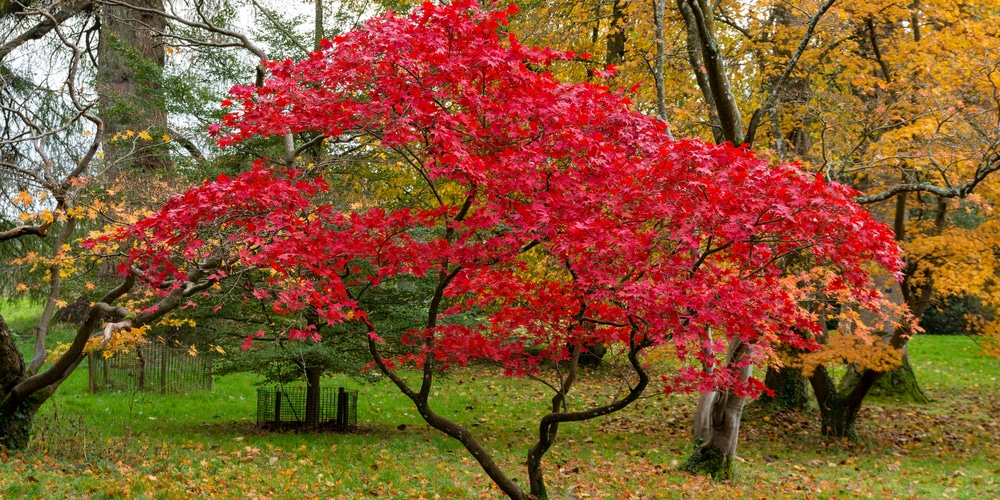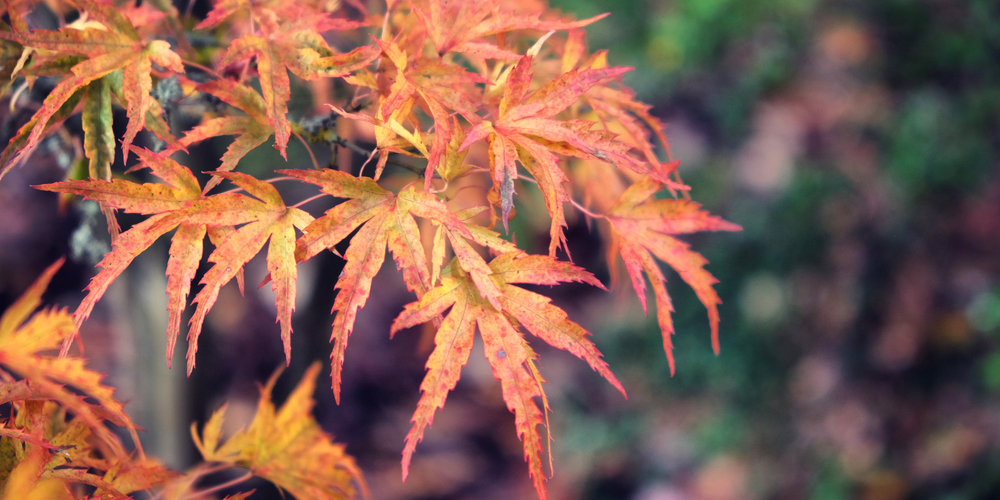Japanese Maples may look delicate but in reality they’re versatile, easy to care for and long-lived. Furthermore, you can grow one in a container as a bonsai plant to display in your home.
If you’re asking, ‘how do you plant a Japanese Maple in clay soil?’, then you’ve come to the right place. The species actually grows well in nearly all types of soil as long as it’s well-draining and doesn’t hold too much water.
What Type of Soil is Best for Japanese Maples?

The Japanese Maple isn’t really fussy about soil type, as long as it gets the moisture and nutrients it needs to flourish and grow well.
That said, any garden mix will usually do, but then you’ll want to incorporate certain soil characteristics for the best results. Aside from the well-draining feature, the medium will have to retain moisture consistently well so the plant stays hydrated when needed.
Japanese Maples are tough and can tolerate heavy clay soil and loose sand, but what’s important is that you don’t put them in soil that has heavy salt. Make sure to check the pH as well as the presence of salt before planting the Japanese Maple.
Clay-heavy soil should be generously amended with topsoil or aged compost in a 50/50 ratio. Ideally, the end medium should be a loamy and well-drained soil that can hold moisture fairly well. The plant wouldn’t like to have a soil that doesn’t hold enough water, and also one that doesn’t allow water to pass through.
How to Plant a Japanese Maple in Clay Soil
The first step to planting your Japanese Maple is to look for an ideal location in your yard or garden. It thrives in areas that get full sun in cooler zones and shade from the afternoon sun in warmer zones.
Once the location is set, you should inspect and amend the planting site as needed. Remember, Japanese Maple do not like sitting in water for too long, so if your garden or yard is primarily made up of heavy clay then you will have to mix in compost or organic material, as well as topsoil to amend it.
Planting depth will largely depend on how well the soil holds water. For mostly clay soil, it’s recommended that you set the Japanese Maple at a 6 inch height above ground level to avoid root rot. If you amend clay soil well and it drains normally, the height should be around 3 to 4 inches above the ground. On the other hand, for a quick-draining medium such as sand, have the planting height set an inch above ground and amend with organic matter such as peat moss or top soil.
After settling the plant in the preferred location it’s time to give it water and allow it to settle in. You should see signs of growth a few days up to a week after establishment.
How to Care for Japanese Maple
Young Japanese Maples will need a certain degree of protection from strong winds and when frost comes. You can apply compost and mulch around the tree to keep it alive during the winter season, or relocate them indoors if growing in a container.
Watering
Water them regularly and deeply as they’re growing in the first few years. After that, the tree will grow to be drought-tolerant and can handle a missed watering schedule or two. Constant watering and mulching is the key to growing Japanese Maples and keeping them at their best state.
Fertilization
It’s important to note that this species loves to feed on nutrients, so you should apply compost, manure or fertilizer every now and then during its growing season, then hold off when the plant enters its dormancy period.
Pests and disease
Japanese Maples are fairly resistant to pests and diseases, but they become susceptible if stressed out due to lack of water and heat. Remember to water in summer and hot days to keep them happy and consider moving to a more sheltered area if you see leaf burn.
Pruning
Pruning is nice but not necessary for the Japanese Maple. It tends to grow in an artistic manner on its own, but if you want you can cut off straggly growth and dead wood to keep it looking its absolute best.
How Do You Plant A Japanese Maple In Clay Soil: Conclusion
You can plant a Japanese Maple in clay soil as it isn’t fussy about soil type, as long as it gets the moisture and nutrients it needs.
Related Article: 9 Maple Trees That Will Grow Well in the Colorado Climate

